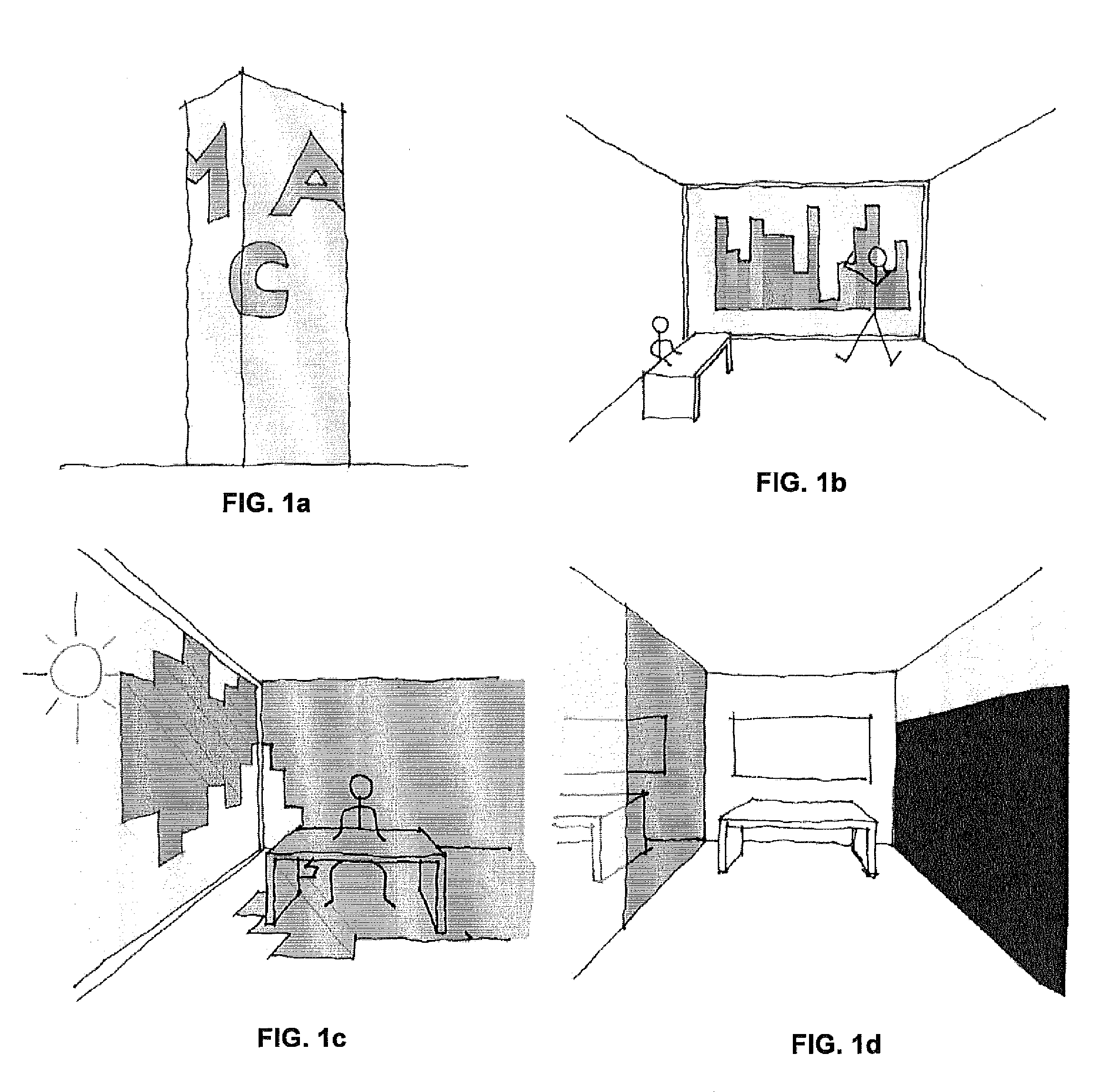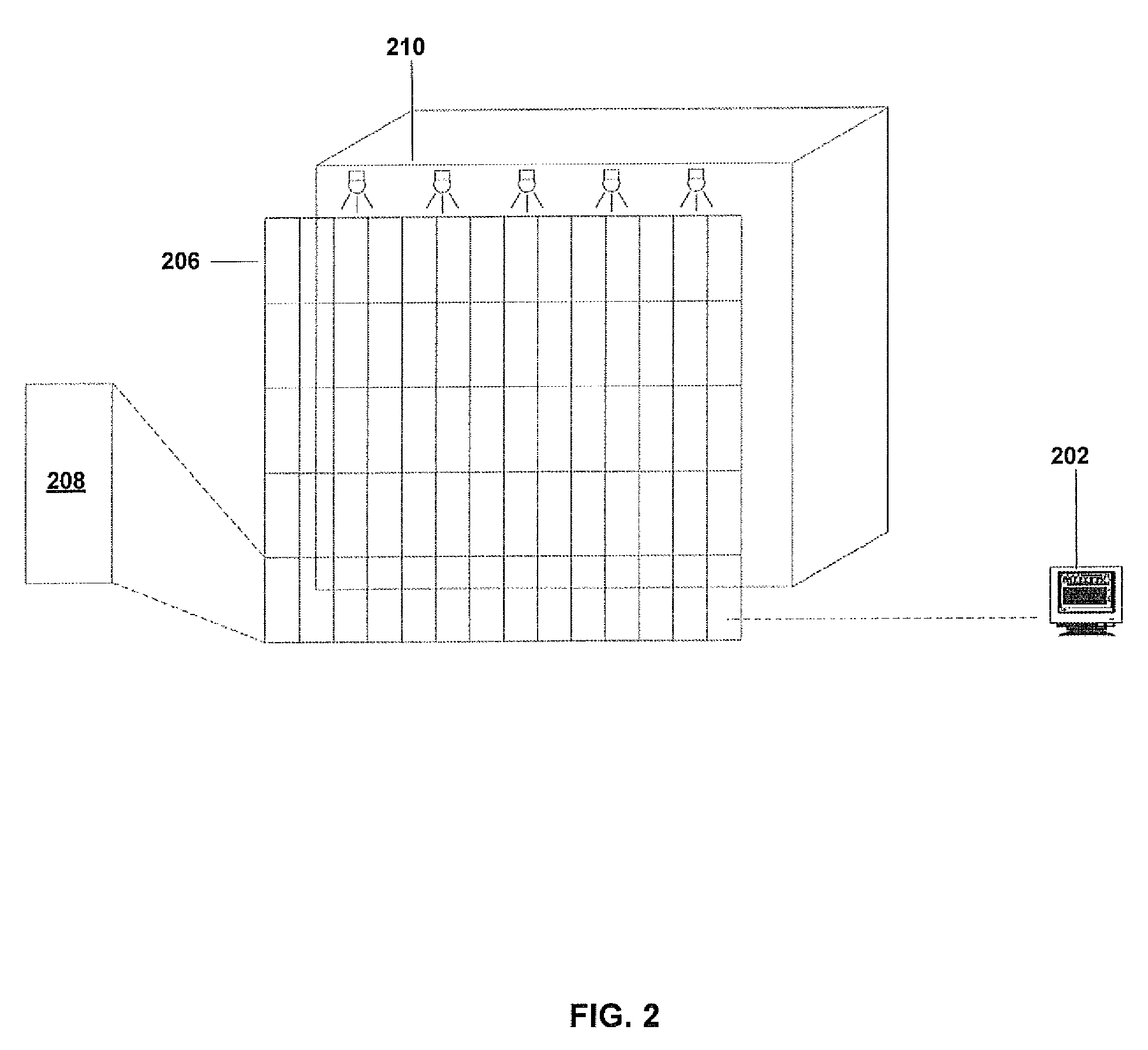Programmable window: a device for controlling the opacity of small-scale areas within a large scale transparent membrane
a technology of transparent membrane and opacity, applied in the field of environmental control and transparent displays, can solve the problems of no efficient method for regulating the amount of light that does pass through the display device, no work on pixellating these materials, and no work on achieving the effect of controlling the opacity of small areas and accurately and selectively controlling the amount of ligh
- Summary
- Abstract
- Description
- Claims
- Application Information
AI Technical Summary
Benefits of technology
Problems solved by technology
Method used
Image
Examples
Embodiment Construction
[0043]While this invention is illustrated and described in a preferred embodiment, the invention may be produced in many different configurations. There is depicted in the drawings, and will herein be described in detail, a preferred embodiment of the invention, with the understanding that the present disclosure is to be considered as an exemplification of the principles of the invention and the associated functional specifications for its construction and is not intended to limit the invention to the embodiment illustrated. Those skilled in the art will envision many other possible variations within the scope of the present invention.
[0044]This invention focuses on applications to architecture, but the same device could be used in automobiles, marine vessels, aircrafts cameras, or any instrument that requires a selective and accurate regulation of light through a transparent membrane.
[0045]FIGS. 1a-d illustrates four main applications within architecture.
[0046]A) Large scale displa...
PUM
 Login to View More
Login to View More Abstract
Description
Claims
Application Information
 Login to View More
Login to View More - R&D
- Intellectual Property
- Life Sciences
- Materials
- Tech Scout
- Unparalleled Data Quality
- Higher Quality Content
- 60% Fewer Hallucinations
Browse by: Latest US Patents, China's latest patents, Technical Efficacy Thesaurus, Application Domain, Technology Topic, Popular Technical Reports.
© 2025 PatSnap. All rights reserved.Legal|Privacy policy|Modern Slavery Act Transparency Statement|Sitemap|About US| Contact US: help@patsnap.com



